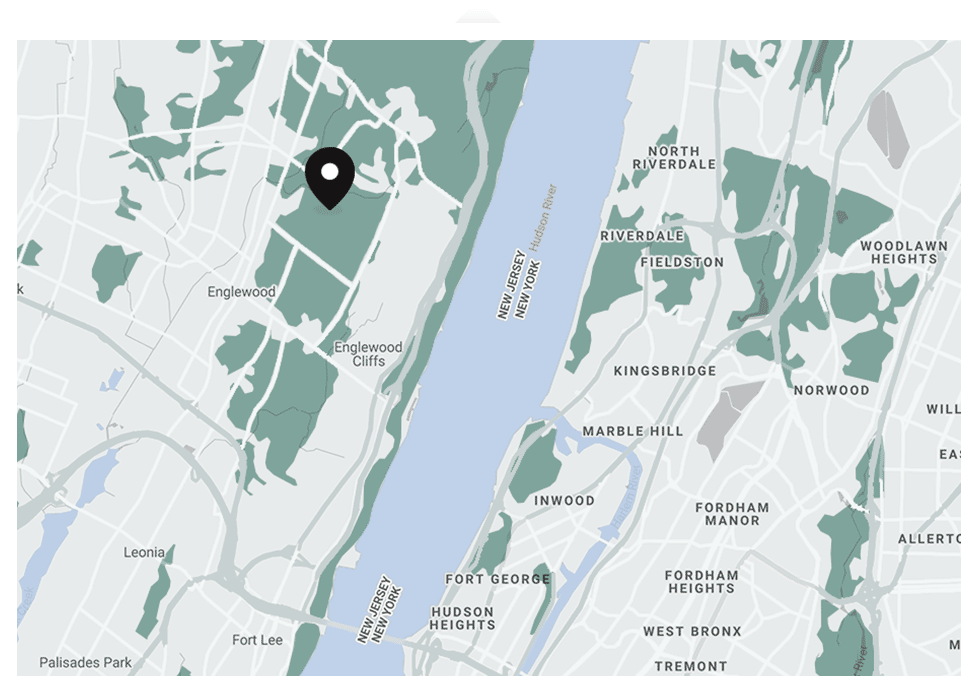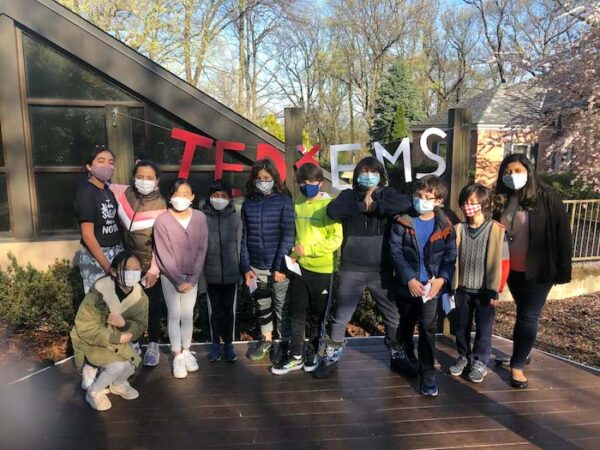How EMS is empowering student agency and shaping active learners
Written by Laura Adams Stiansen
Student agency: It’s defined as a student having an active and meaningful role in their learning through having a voice — and a choice — in the process. According to the DKDK Project, a renowned consulting group that supports teachers in designing deeper learning experiences, student agency leads to deeper engagement, increased intrinsic motivation, a greater sense of meta-cognition and self-knowledge, heightened interaction, and long-lasting understanding, and it creates a classroom culture that values everyone’s learning through support of dialogue and connection.
“Teachers can design choice and student decision-making in big and small ways through learning experi- ences,” says Erica Chapman, founder of the DKDK Project. According to Chapman and her principal collabo- rator, David Dunbar, teachers who are attuned to the powerful role of student decision-making think of teaching as an opportunity to create learning envi- ronments. “In this kind of design work, teachers think of themselves more like ecologists than transmitters of knowledge or information.”
We allow students to choose where they will work and play, what materials they want to use, and who they would like to work with. This is a challenge for many but a fundamental piece of what makes a successful student at EMS.
Carissa Garcia, Chilton house 3s Teacher
CHILTON HOUSE
“Our entire day is spent cultivating student agency,” says 3s Teacher Carissa Garcia. “Since September, we have worked to transfer the balance of power from an adult-directed learning environment to one that is directed by the students.” The 3s class teachers have reviewed with the students how to use key materials — how glue can help things stick together, how to put the cap back on a marker, how to wash a paint brush or mix colors — and then create projects that allow students to practice these skills.
“As the year progresses, we do less prescriptive art work in order to encourage more individual exploration and creativity,” she adds, noting that toward the end of the year she observes children coming up with their own ideas, mixing art mediums, and thinking creatively about their own work.
Another way Chilton House teachers encourage student agency is by giving students the verbal tools they need to think through the process of learning.
“Metacognition and reflection do not always come naturally to young children, and if left to their own devices, they can tend to repeat the same process without adjusting their methods or actually learning from their experience,” says Garcia. “An example of this is building in blocks. Early in the year, we often see students building the same block structure repeatedly even if it is unsteady and falls down. We [the teachers] make a point to verbalize what would normally be an internal dialogue and say, ‘I noticed your structure keeps falling down…I wonder how you could change the design to make it sturdier.’ Later in the year, we hear students using this language independently to narrate their own experiences and to facilitate social learning for themselves.”
Kindergarteners in Chilton House enjoy “center time,” where materials are set up at centers that are designed to encourage independence and self-directed learning. Kindergarten Teacher Rachel Simonson says, “It is a curated choice time. For example, in our hollow blocks center, the children brainstorm, decide on, and then create using the blocks, art materials, and recyclables — a setting for dramatic play.”
Simonson adds that within the class’ thematic studies, the students have many opportunities to direct their own learning. During a recent animal lesson, the teachers began by asking the class what they would like to learn and then used their answers to guide the lessons.
“By being attuned to the youngest learners’ interests, Chilton House teachers cultivate their students’ sense of curiosity. They also model and promote inquiry skills. Though it may feel like it is a long way off, this approach positions more advanced learning down the road. What starts with a few questions in the thematic animal unit leads students to build cognitive muscles they will use in their Morrow House historical research projects eight or 10 years later,” says Chapman.
“We allow students to choose where they will work and play, what materials they want to use, and who they would like to work with,” says Garcia. “This is a challenge for many but a fundamental piece of what makes a successful student at EMS. It also leads to the most meaningful learning experiences as the motivation to learn and succeed eventually emerges from within the student.”
LITTLE SCHOOL
Fourth-Grade Teacher Puja Kothari was excited by a particular lesson idea that came to her as she considered ways to give students more agency in their learning. What if she gave her students a platform to present their views regarding topics that interested them? Her idea sparked the creation of TEDx EMS, a TED Talks-inspired project.
“I’ve seen young students all over the world perform TED Talks on stage, so I thought it would be a great opportunity for my class, and I wanted to give them an outlet to voice their thoughts,” says Kothari. “It was an exercise that ties in the elements of persuasive writing, non-fiction texts, researching, and presentation skills.”
The TEDx EMS topics included video games; how to help stop Asian hate; the benefits of fresh air; technology: how much is too much?; the benefits of calming down; why children’s emotions matter; why you should learn to cook; the power of failure; and how to get a better night’s sleep.
“I really liked doing TEDx EMS because I liked explaining something I’ve experienced and many people don’t know about it, especially adults,” says Anya, a fourth-grader, who explored how children’s feelings matter as much as adults’ feelings do. “I really liked how we had options but I could still get help on research and how to create a strong argument. It was a fun experience even though it was a bit nerve-wracking.”
Fellow fourth-grader Olivia agreed. “It is nice to choose what you learn because if you don’t want to learn something, you won’t pay attention. We often have a choice in the class- room across many subjects.”
“In the same way that students are often invested in and motivated by the end goal of performing a play or a piece of music or participating in a meaningful sporting event, the TEDx EMS project engages students because it requires them to prepare for a public presentation. In fact, much of the latest research on ‘deep learning’ notes that student agency occurs much more frequently in so-called ‘extracurriculars.’ The TEDx project is brilliant because it moves these benefits to the daily academic classroom,” says Dunbar.
MORROW HOUSE
In our seventh- and eighth-grade history classes, the students wrapped up the year with research projects. “They had the choice in selecting their topics,” says Middle School History Teacher Amy Man, “but I try to steer their topics based on preferences and research skills. If students want to research someone or a topic not on my suggested topic lists, I always work with them to make sure their choices would fall within the parameters of the project.”
Most recently, our eighth-grade students researched a topic from the civil rights movement. Then, they wrote an analytical paper evaluating whether the tactics of their selected topics were effective in achieving more equality. This year, a new com- ponent to this project was added that included presentations of what they learned to our fourth-grade students (who have also studied the civil rights movement).
“I not only learned more about the civil rights movement as a whole, but I also learned about my specific topic, the Freedom Rides, and its impact and why it mattered. Although it was enjoyable researching and writing about my topic, it was so fun to present it to my fourth-grade buddy,” says Anna. “It was really interesting to see them interact with my game and ask questions about my topic. I had such a great time collaborating with my fourth-grader, and my only regret is that we didn’t have more time together!”
Fellow student Sofia adds, “From my project, I learned a lot more about sit-ins and how major the Greensboro Four were (they were college students). It was all very interesting to research, and I enjoyed making the game and playing it with my buddy. The project was long and I faced many challenges along the way, but it was all worth it in the end. It is a great way to interact with the younger grades and create small bonds.”
“In our work with the EMS faculty we have been impressed by the faculty’s desire to move towards an increasingly integrated, cross-divisional approach to student agency. Having eighth-graders working with fourth-graders is an excellent example of the faculty’s openness to collaboration and innovation. Through projects like this one, the Morrow House and Little School teaching faculty are becoming more and more aware of the benefits of exchanging ideas cross-divisionally to enhance opportunities for student agency,” says Chapman.
Students in Morrow House art classes learn about movement in art history and find ways to apply that knowledge into their own artwork. “The students pick and choose how they want to represent this moment in history through their own lens,” says Morrow House Art Teacher Sarah Smith. “It’s exciting to see all the variety of artwork they end up creating.”
“Educational researchers, like John Hattie, have posited that the aim of school is to create active learners who see themselves as the agents of their own learning process. If this is true, and we believe it is, then the role of a teacher is to design environments and experiences that maximize this aim. Teachers who work in this way are attuned to the way the learning happens from the students’ perspective. We see this type of learning occurring in each division at Elisabeth Morrow and we know teachers are invested in continuing to design in this way,” says Dunbar.
There's No Better Time to Support Your Child's Education
Every time you donate to one of Elisabeth Morrow's dedicated funds, you help enrich the daily experiences of our community on campus. STEAM spaces are improved, library catalogues expanded, scholarships are funded, and teachers are hired. Every day, you can see the impact your generous donations have on campus.


